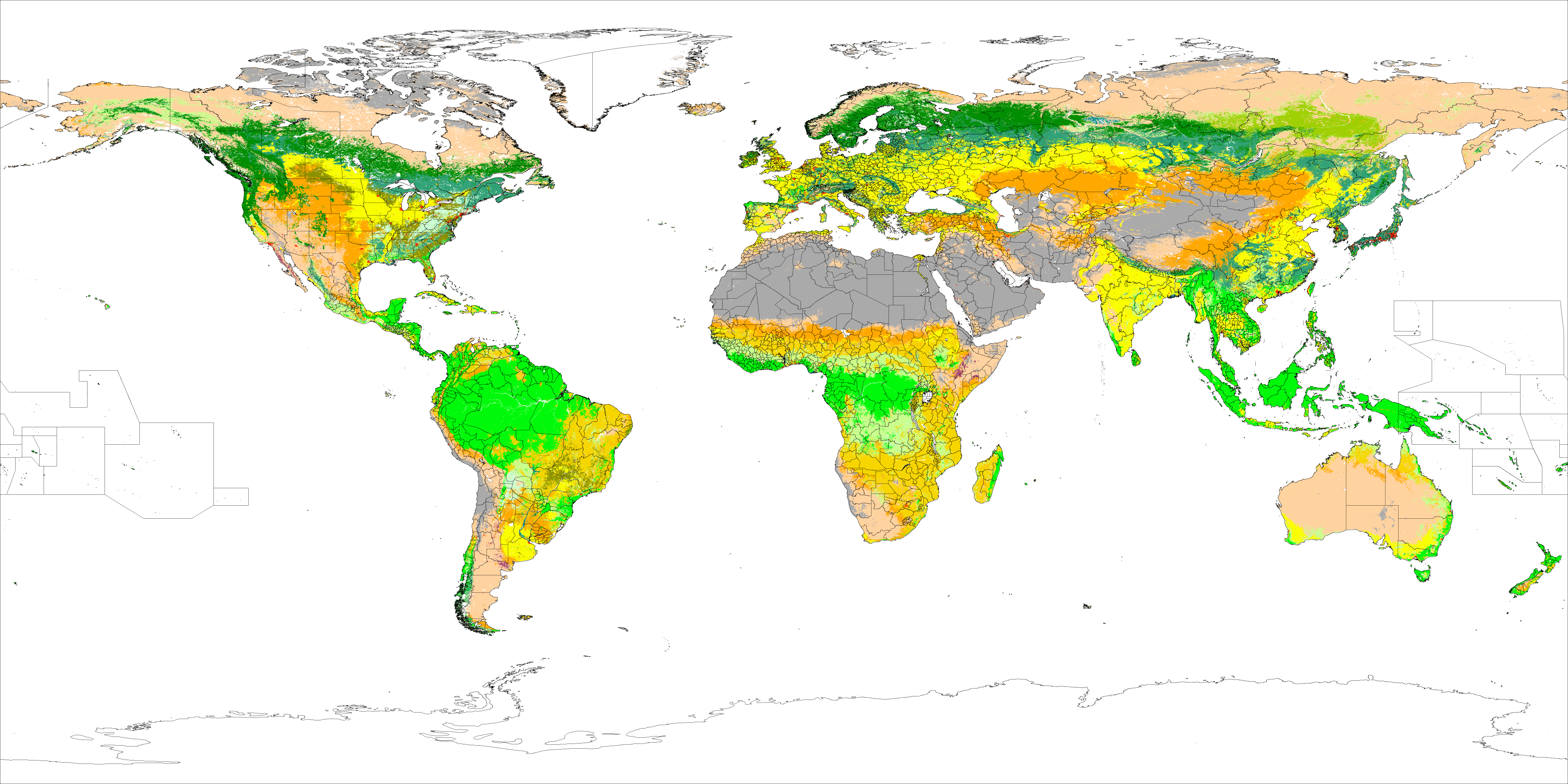International Geosphere-Biosphere Programme on:
[Wikipedia]
[Google]
[Amazon]
The International Geosphere-Biosphere Programme (IGBP) was a research programme that ran from 1987 to 2015 dedicated to studying the phenomenon of global change. Its primary focus was coordinating "international research on global-scale and regional-scale interactions between Earth's biological, chemical and physical processes and their interactions with human systems."
The  IGBP research was organised around six projects representing the Earth system –
IGBP research was organised around six projects representing the Earth system –
International Council of Scientific Unions
The International Council for Science (ICSU, after its former name, International Council of Scientific Unions) was an international non-governmental organization devoted to international cooperation in the advancement of science. Its members ...
, a coordinating body of national science organizations, launched IGBP. It looked at the total Earth system, the changes that are occurring, and the manner in which changes are influenced by human actions.
IGBP aimed to describe and understand how the physical, chemical and biological processes regulate the Earth system. It also sought to increase knowledge of how humans are influencing global processes, such as the carbon cycle
The carbon cycle is a part of the biogeochemical cycle where carbon is exchanged among the biosphere, pedosphere, geosphere, hydrosphere, and atmosphere of Earth. Other major biogeochemical cycles include the nitrogen cycle and the water cycl ...
, nitrogen cycle
The nitrogen cycle is the biogeochemical cycle by which nitrogen is converted into multiple chemical forms as it circulates among atmosphere, atmospheric, terrestrial ecosystem, terrestrial, and marine ecosystems. The conversion of nitrogen can ...
, sulfur cycle
The sulfur cycle is a biogeochemical cycle in which the sulfur moves between rocks, waterways and living systems. It is important in geology as it affects many minerals and in life because sulfur is an essential element (CHNOPS), being a consti ...
, water cycle
The water cycle (or hydrologic cycle or hydrological cycle) is a biogeochemical cycle that involves the continuous movement of water on, above and below the surface of the Earth across different reservoirs. The mass of water on Earth remains fai ...
and phosphorus cycle
The phosphorus cycle is the biogeochemical cycle that involves the movement of phosphorus through the lithosphere, hydrosphere, and biosphere. Unlike many other biogeochemical cycles, the atmosphere does not play a significant role in the moveme ...
. "It delivers scientific knowledge to help human societies develop in harmony with Earth's environment."
 IGBP research was organised around six projects representing the Earth system –
IGBP research was organised around six projects representing the Earth system – land
Land, also known as dry land, ground, or earth, is the solid terrestrial surface of Earth not submerged by the ocean or another body of water. It makes up 29.2% of Earth's surface and includes all continents and islands. Earth's land sur ...
, atmosphere
An atmosphere () is a layer of gases that envelop an astronomical object, held in place by the gravity of the object. A planet retains an atmosphere when the gravity is great and the temperature of the atmosphere is low. A stellar atmosph ...
, ocean
The ocean is the body of salt water that covers approximately 70.8% of Earth. The ocean is conventionally divided into large bodies of water, which are also referred to as ''oceans'' (the Pacific, Atlantic, Indian Ocean, Indian, Southern Ocean ...
and where they meet (land-atmosphere, land-ocean, atmosphere-ocean) and two further projects looking at the Earth system as a whole: Past Global Changes (PAGES), which looks at palaeoclimate, and the Analysis, Integration and Modelling of the Earth System (AIMES), which helps set the agenda for Earth system models, as well as four joint projects – carbon, water, human health and food security
Food security is the state of having reliable access to a sufficient quantity of affordable, healthy Human food, food. The availability of food for people of any class, gender, ethnicity, or religion is another element of food protection. Simila ...
– with the other three international global-change programmes.
In 2004, IGBP published a landmark synthesis, '' Global Change and the Earth System: A Planet Under Pressure'' (Steffen ''et al''). The synthesis stated that humanity was now the main driver of change at the planetary scale and that Earth is now operating in a "no analogue" state. Measurements of Earth system processes, past and present, have led to the conclusion that the planet has moved well outside the range of natural variability in the last half million years at least.
From 2008 to 2015, Sybil Seitzinger was executive director of the IGBP.
IGBP projects
* Analysis, Integration and Modeling of the Earth System ( AIMES) * Global Ocean Ecosystem Dynamics (GLOBEC) * Global Land Project (GLP) * International Global Atmospheric Chemistry (IGAC) * Integrated Land Ecosystem–Atmosphere Processes Study (iLEAPS) * Integrated Marine Biogeochemistry and Ecosystem Research (IMBER) * Land-Ocean Interaction in the Coastal Zone ( LOICZ) * Past Global Changes ( PAGES) * Surface Ocean Lower Atmosphere Study (SOLAS) * Integrated History and Future of People on Earth (IHOPE)IGBP joint projects
* Global Carbon Project * Global Land Project * Global Environmental Change and Human Health (GECHH) * Global Environmental Change and Food Systems (GECAFS) * Global Water System Project (GWSP) *International Nitrogen InitiativeInternational partners
* Earth System Science Partnership * World Climate Research Programme * Diversitas *International Human Dimensions Programme
The International Human Dimensions Programme on Global Environmental Change (IHDP) was a research programme that studied the human and societal aspects of the phenomenon of global change.
IHDP aimed to frame, develop and integrate social science ...
See also
*Systems geology
Systems geology emphasizes the nature of geology as a system – that is, as a set of interacting parts that function as a whole. The systems approach involves study of the linkages or interfaces between the component objects and processes at all ...
References
External links
* {{Authority control Organizations established in 1986 Climatological research International organizations based in Sweden Systems sciences organizations Systems geology International scientific organizations